#worst history/mythology post series
Explore tagged Tumblr posts
Text
Another day, another worst history/mythology post! It's been awhile.
Now, "x character/historical figure/ethnic group were secretly black!" content is so common that it almost doesn't register anymore, nor is this the first "Worst" entry to feature the idea, but this post was so Wild in its bizarre blanket statements while also mixing some genuine facts in?? that it caught my attention, and brought to mind this great quote from M. R. James

To start, let's look at the plausible stuff.
First they mention some black or potentially black characters in Greek myth, such as Memnon and Andromeda. Both of them are identified with Ethiopia, so that's totally plausible. Cool, with you so far. Then they claim Heracles is black. I'm not used to seeing one-drop-policy applied by Europeans so that's... interesting. A man four generations removed from a single black ancestor would seem more aptly described as "mixed race," but ok, I'll go with it.
Then they bring up a potentially black Zeus in Sophocles' Inachos, which is a genuine debate. However, a single literary description of Zeus hardly seems to set the ethnicity of Heracles in stone, since the gods can look however they want, there are plenty of alternative appearances for Zeus in art/literature, and the genetic inheritance of the gods is, uh, creative at best? Sex with Zeus in swan form produces human-looking babies from eggs, sex with him in eagle form seems to do nothing much special at all, and Hephaestus thinking about Athena while he came made the resulting sperm-baby be born with snake legs. (Don't ask.)
We get into murkier waters with op's statement that Heracles and Apollo should be understood as black because of the sculptures from Veii. Basically according to op, a figure being represented with dark paint or in brown terracotta = the artists' intentions to represent them as "dark skinned" = "dark skinned" must mean black.
And now we get to the core argument of the post, namely, that ethnic Greeks are not white Europeans, but black. As such the Greek gods and heroes were of course, not light-skinned white people, but black. Because you are either Swedish, or Sub-Saharan African, apparently. Op identifies themself as black and distinctly ties their non-whiteness to their Greek identity.

(This is from a point where they imply that Achilles was also black, and that readings of his hair or coloring as light, blonde, or red are incorrect-- his hair color was described to show he was *spins bottle* Angry. Ok.)
So, we've made it to "dark-colored figures in art means black people," "terracotta statuary means black people," and "modern and ancient Greeks are black people because op is. Or something."
Artistic and gender conventions in the ancient Mediterranean don't mean anything apparently. Nor does the presence of dozens of white or light-painted figures either, it would seem. Don't look at these art pieces, then.

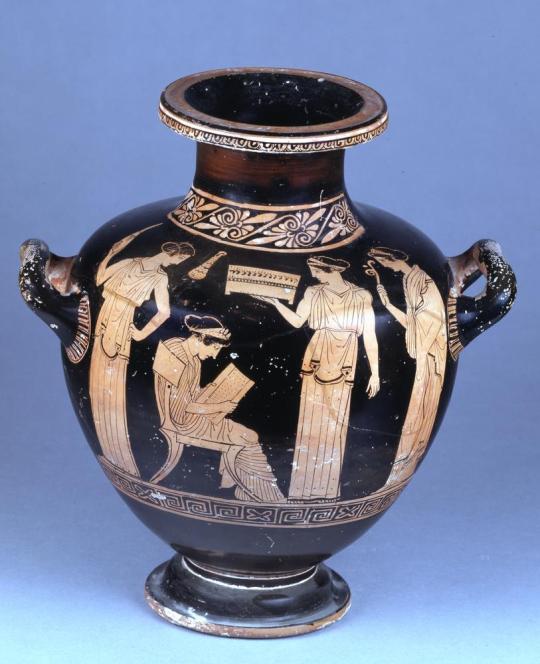





Terracotta, by the fact of its being brown, means anything sculpted with it is apparently depicting black people. (Brown people don't exist??) Also every piece of art that isn't colored, and left in its natural tones also dictates race. Every person represented in bronze or onyx or wood is automatically black. Every person represented in marble or ivory is now automatically white. I'm claiming porphyry for the native americans, so now the four tetrarchs were actually indigenous (#historiansdontwantyoutoknow) And if you were unlucky enough to be immortalized in contrasting color stones, god help you.
There also of course aren't a zillion examples of painted terracotta throughout Greece where the subject is portrayed with light skin.


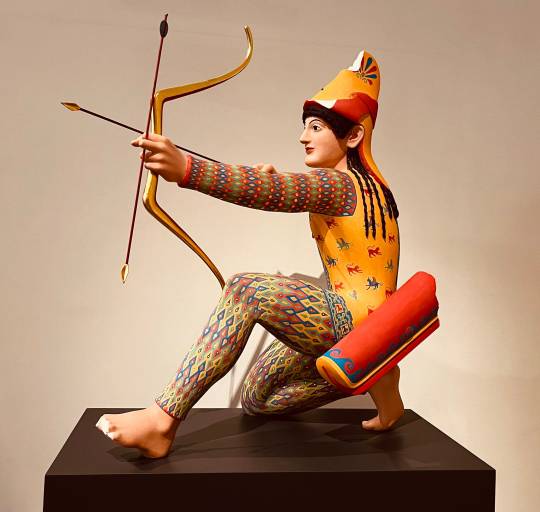


Idk if I'm supposed to just not see these statues? Or if because they were sculpted in terracotta, I'm just supposed to identify them as black somehow? Because if so I can only assume that the ancient Chinese were also black??
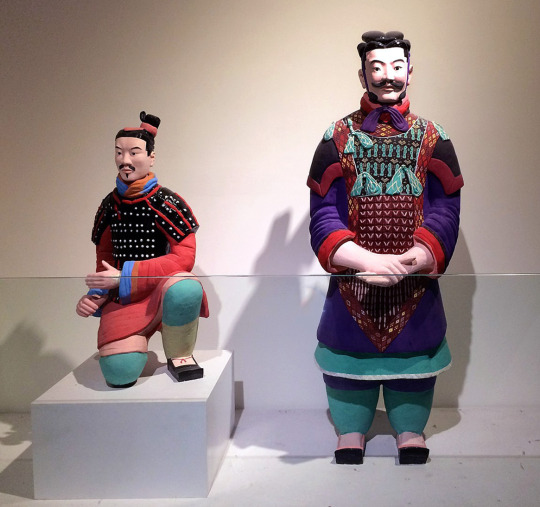
Despite these works (these are the original colors of the famous terracotta warriors) being painted to represent lighter skin and East Asian features, they were terracotta underneath, so we all know they were actually Africans. I'm learning so much.
Well, we've figured out that the Chinese are black, and so are the Greeks--- Romans however, seem to be white?? Maybe??

This whole statement is Interesting, but I'm just concerned with the highlighted bit here because
--the "dark skinned" terracotta statues of Apollo and Hercules op is fixated on aren't Greek. They're Etruscan. Veii was in the heart of Etruria.
So not only does the appearance of these statues have no meaning as far as what the Greeks thought about their own ethnicity one way or another, since this isn't Greek art, but if Romans are white, it would follow that the Etruscans are too? Making the whole presence of these statues in this argument completely null.
Of course like the vast majority of the world, the Etruscans did not consider terracotta an inviolable artistic medium which might not be blemished with the application of paint. They frequently painted their pottery and statuary.

(Oh man, light skinned figure and darker skinned figure together! Pale woman and tanned man! Where have I seen these ideas before? Not in the temple of Apollo at Veii, certainly not!)


The statue of Apollo at Veii has darker colored skin, while the statue of his mother (part of the same temple complex) sports a lighter complexion. This of course, definitely does not represent gender ideals or artistic conventions such as those we can clearly see going on in sarcophagus above. Apollo was black African/Greek and the color of the clay proves this. Is his mother also black then, also being made from terracotta? Or white because her skin is painted lighter? These are Etruscan italian works, so they're white, right? But no, no, we've established they're sculpted from terracotta, so that makes them actually black. So are Italians not white now??? Op help!!
To discuss Heracles again and touch more on those claims about Achilles, what is presented as the deciding factor of why these gods and heroes and the Greeks as a whole must be black?


There you are. All those light-skinned Greek folks in Greek art couldn't possibly be white, or any other race but black, because white people can't survive in Greece without modern science.
We all know that black people are universally invulnerable to sun-stroke, and that pre-sunscreen white Europeans swooned away to nothing like sensitive victorian heroines at the mere touch of sunlight. The Romans, Etruscans, Italians in general, Spaniards, and Southern French, apparently, were ok because the heat of Greece specifically is more threatening to weak white flesh than the entire rest of the Mediterranean-- only poc can survive in the hellish wastes of the Aegean.

(White person or vampire?? increasingly hard to tell).
So where does this put the numerous light-skinned figures in Greek art? Including light-skinned representations of op's supposed dark-skinned heroes? And Etruscan works that they claim are black Greeks? Well, now we're getting into a gray area that they don't provide us much context for, so I'm going to have to interpret for myself. This little tidbit might give a hint, though.

This could definitely not mean she restored a manly, youthful look to him (fit, tan, no longer grizzle-haired). Of course, if Athena had to artificially darken him, would that make this the first case of blackface? Or is op implying Odysseus was trans-racial? Does that make Odysseus the only white Greek? Or was he not actually Greek till Athena apparently transformed him into a black man? Does op want me to believe the entirety of Greece, despite different skin tones and origins, have been magically altered into black people through Athena's divine intervention?? Fascinated to know.
#felt very snarky this morning you can tell#anyway!#worst history/mythology post series#the ancient world#ancient greece#ancient history#lore and more#greek mythology
2 notes
·
View notes
Note
Going to be really boring with the ask but: Agatha Harkness for:
5: What kind of tea do they like?
20: What would their favorite book series be?
And then Lilia calderu
12: How many piercings do they have, which ones, and how often do they wear them?
13: Would they let a small child paint their nails?
14: Are they a good babysitter?
and Jennifer Kale:
17: Math Gay, English Gay, or both?
THESE ARE SO GOOD I'M SO EXCITED!
Agatha:
5. What kind of tea do they like?
omg listen...I hear/read/see the word 'tea' and my brain goes ballistic. I LOVE tea; I have a tattoo of a TEA KETTLE. But aside from all that, I think she's definitely a herbal tea drinker. I mean, she probably had to make a lot of tea and know what plants were safe to ingest when she was living out in the woods with Nick and I think that stuck with her throughout time. Lots of good remedies/health benefits come from it and I think that's also something very magical (and hey yeah, plants can improve your health and well shit, RIO OUT HERE MAKING THOSE PLANTS!) That's a win/win situation right there.
(back to edit - making tea in Wandavision 🥰)
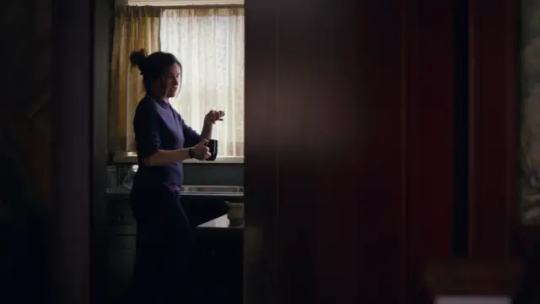
20. What would their favorite book series be?
Ok so we all know she's a voracious reader I mean, the girl was trying to steal a (spell) BOOK. And, we had Detective Agnes go into an ACTUAL library to do her investigation and not use the (especially in this day and age) libraries website to find the book she was looking for. ALSO, HER HOUSE?


Brb breaking in to steal all her books. As for a book series though, it's probably something old, maybe even a history series or mythology. She definitely feels like someone who knows her history (to use it as she will in the worst ways possible). Knowledge is power and knowledge is sexy.
(coming back to edit this post because I couldn't find the pic this morning but yeah! Agnes visiting the library! Just like me for real, I have two books due soon 😅)
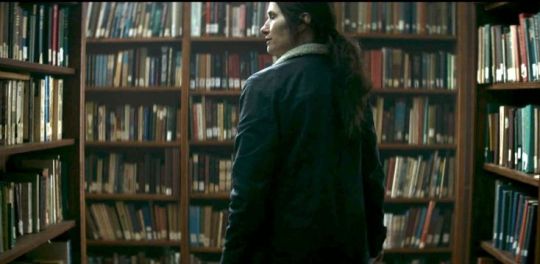
Lilia:
12. How many piercings do they have, which ones, and how often do they wear them?
I think she would just have her lobes, very European (especially Italian), to have your ears pierced at a very young age. And she would wear them all the time!
13. Would they let a small child paint their nails?
Oh for sure! 🥺 I think she would be wonderful around kids, especially younger ones. She brings such warm vibes and I think just her having some love and attention put onto her warms her heart.
14. Are they a good babysitter?
I would think so! Just...just don't feed any of those kids anything expired ma'am...please..
Jennifer:
17. Math Gay, English Gay, or both?
Oh she is very, very smart. Look how far that woman has come even BOUND. She has her own business! She was a midwife! A root worker! She had to know how to read and apply maths and sciences to her practices.
#Ask#Ask game#THANK YOU FOR THESE!#Agatha Harkness#Rio Vidal#Lilia Calderu#Jennifer Kale#Marvel#Agatha All Along#Wandavision#I KEEP ADDING PICS TO THE ASK FORGIVE ME
25 notes
·
View notes
Text
WALDEMATH MOON/ DARK MOON LILITH (H58)
I have always wondered where people get their Lilith keywords from on this app, since there are four Liliths (that I am aware of now) and they all have seemingly different keywords but there is no source linked, ever. Yes I have a problem with that since we should all be on the same page and have at least ONE primary source and not just pull all of the information from "personal experience" or anything of that nature. We don't do this for someones Venus for example because we can look back at mythology and proceed from there, same should be applied for the Liliths, which is essentially why I am making this series and starting with the h58 Waldemath Moon.
Since we have several Liliths we can not just pull aspects from her mythos and apply it randomly to wherever it makes sense or because so and so said it should be done that way, we have to look at the history behind how the specific asteroid was discovered as well and somehow merge those together accordingly.
The story of the h58 is quite interesting and in my opinion gives a bunch of interesting keywords. The astronomer who claimed to have discovered the h58 Moon is Dr. Georg Wilhelm Waltemath, he called it "the second Moon". His hypothesis for why such a satellite exists is because he thought something was gravitationally affecting the Moon's orbit. He gave detailed information into it which you can read here, and he "claimed that it was not normally visible with the naked eye but predicted it would be visible between 2 and 4 February 1898. Twelve claims were made to have seen it at that time but were later proven fraudulent or mistaken by astronomers W. Winkler and Baron Ivo von Benko who had been monitoring the area at the time. Waltemath also claimed that the moon had been sighted previously by Adolphus Greely in Greenland on 24 October 1881 and by painter and personal friend, C. Waller in Munich on 16 February 1897."
Later on in 1918, astrologer Walter Gornold also known as "Sepharial" claimed to have confirmed the existence of Waltemath's moon and he named it "Lilith" after Lilith from the jewish legend. He claimed it was a "dark" moon, invisible for most of the time.
Now that we have the backstory down so to speak, and we can see it's based on a primary source we can start with the keywords.
Waldemath Moon/ Dark Moon Lilith keywords: The Hidden, The Unseen, The Unconscious, Phantoms, Parts Of You That Only Some People See, Unseen But Powerful Raw Forces, Undiscovered Parts Of The Self, Where No One Believes Us, Parts Of Yourself You Don't Believe Exist, Your Unlocked Potential But Also Worst Darkest Shadow, A Part Of You That Has Been So Shunned You Are Consciously Not Aware Of It, Etc.
I believe this could also be the unseen parts of Lilith herself, parts of her mythos that has been lost or information that is not mainstream. If you look deeper into this you might find more interesting keywords to have for the h58.
I will make posts with h58 in each sign in the future so stay tuned for that. Thank you for reading, if you have your own keywords to add based on what you have learned please comment them I would love to see it.
sources
https://en.wikipedia.org/wiki/Georg_Waltemath#cite_note-Schlyter-
#astrology#astrology notes#astro observations#astro community#lilith#Lilith h58#h58#dark moon Lilith#waldemath moon lilith#astro notes#astrology observations#Lilith notes#Lilith placements#Lilith astrology#Waldemath moon
141 notes
·
View notes
Text
Get to know your mutuals!
Thanks for tagging me @joyful-soul-collector !
What's the origin of your blog title? Well that’s simply because I got a tiny bit hyperfixated on the Neuvichili ship (Neuvillette x Childe x Zhongli from Genshin Impact) during the Fontaine patch, and that out of the 100 fics that exist for it, I wrote like, 65 of them? 😅 And since I posted them on anon at first, the neuvichili author name stuck.
OTP(s) + Shipname: Neuvichili (obviously)
Aventio (Aventurine x Dr. Ratio from Honkai Star Rail)
Jayvik (Jayce x Viktor from Arcane)
Favorite color: Purple
Favorite game: I’d say Honkai Star Rail, because I love the characters in this game so much!
Song stuck in your head: Broken Mast Bay – Sail North. Nothing like listening to a selkie song while working on a selkie wip.
Weirdest habit/trait? Not sure if that counts as weird but I love all sorts of animals people usually find disgusting/scary like snakes, lizards, bugs or spiders and I really enjoy taking pictures of them.
Oh also I’ve got a pencil case full of small pieces of paper with the names of characters I’ve gotten attached to throughout the years written on it, and every morning I pick up one to have something positive to think about when I start the day.
Hobbies: Reading, Writing, Crafting, Playing Video Games, Watching Movies/Series, Baking (often the same recipes, but I guess it still counts?), Swimming.
If you work, what's your profession? Technically writer, though tbh I haven’t published anything other than fanfiction in years now.
If you could have any job you wish, what would it be? Oh, I would love a job that has to do with the study of animals (living and/or extinct)!
Something you're good at: Coming up with story ideas! I’d be happy if I managed to write down half of what I imagine.😅 Working on a fic sometimes even feels like a race before a new idea (or even worse, hyperfixation ah ah) arrives
Something you're bad at: Social interactions. I feel much more comfortable writing than talking and I have to plan ahead/brace myself for the smallest things, like checking out at the grocery store/asking a retail worker for advice, otherwise I get overwhelmed quickly.
Something you love: Fanfiction and fanart! (again, obviously)
Something you could talk about for hours off the cuff: Greek Mythology! I got really involved in it as a kid and my interest in it never really left. Also whatever show/book/movie/game/etc I’m hyperfixated on at the moment. And anything related to my OCs.
Something you hate: When people shout/raise their voices.
Something you collect: T-shirts related to the pieces of media I enjoy (my greatest finding so far has been an official Arcane t-shirt that has both Viktor AND Jayce on it, among other characters, which I was overjoyed about because of how little official Jayce merch there is)
Something you forget: To eat, mostly when I’m focused on something I’m really invested in. Often it’s when I’m writing/ working on some craft.
What's your love language? Quality time and words of affirmation
Favorite movie/show: Yu-Gi-Oh!, it will always have a special place in my heart since that’s basically the show that got me into storytelling and writing
Favorite food: Most pasta-based dishes I’d say.
Favorite animal: Oh that’s a tough one, right now I’d say sharks (they’re awesome!) but I love so many animals that I might give you a different answer of you ask me tomorrow
What were you like as a child? The textbook definition of a gifted kid and dealing with medical issues. 0/10, do not recommend. I was/still am very curious/passionate about a lot of things which is nice though.
Favorite subject at school? History.
Least favorite subject: Maths.
What's your best character trait? Creativity, definitely. I love writing stories/making things and sharing them with others.
What's your worst character trait? I’m way too anxious and my mind will come up with the most impossible, worst-case scenarios over the tiniest of things (In a way, I guess that’s the downside of being good at inventing stories)
If you could change any detail of your life right now, what would it be? No more chronic pain please.
If you could travel in time, who would you like to meet? Oh if I could travel in time, I would definitely skip the people part and go a few million years back so I could see all kinds of extinct creatures (and probably get eaten by one, because Jurassic Parks hasn’t taught me anything)
Tagging: any of my mutuals who'd like to do this ❤️
7 notes
·
View notes
Text
Ogun - Day 53
Race: Zealot
Alignment: Dark-Neutral
June 12th, 2024

In my romps through the dilapidated districts of Tokyo in SMT IV, I've always noticed a distinct amount of demons that originate from folklores outside of the common mold and trappings this series falls into. In my opinion, the compendium of SMT IV has some of the best, most stand-out, and most unique demons throughout the series, likely as a result of the shift to sprite-based gameplay meaning that they could experiment more with designs and demons. While some see the sprites as a disappointment, in my eyes, they make for a fantastic experience for the types of people like myself who love investigating the tales behind these monsters. This experimentation gives way to some incredibly unique demons- I've already covered a personal favorite of mine, Nadja, but today's Demon of the Day is another one of these designs that feels like it could only fit in the experimental and fantastical post-apocalyptic world of SMT IV: A god from a far underrepresented mythology, Ogun from the Yoruba people of Nigeria.
If there's one thing many mythologies all seem to have in common, all across the world, it's that there are war gods. And a lot of them. Fittingly for our history filled with conquest, most religious areas have at least one patron of battle, and Ogun is no exception. While not a god exactly, (and we'll get to that,) Ogun represents blacksmithing, battle, rum, and iron; he appears prominently in many African religions, not just Yoruba, but we'll be focusing on his most prevalent role for our discussions today.
In Yoruba religion, what we understand as gods are instead spirits titled "Orisha," though they fulfill a similar role to gods. They had melded the earth, given way to humanity, and are the central figures of worship in the religion, especially the Primordial Orisha. These spirits had been born before humanity, and helped to meld the earth into its habitable shape, sent by the supreme creator Olodumare in order to help humanity get used to life on Ayé, the term used to refer to the world at large. One of these Orisha, of course, was Ogun, and he was one of the most prevalent as well. As the first Orisha to descend to earth, clearing the way for his fellow travelers, he was an incredibly important figure- one of his epithets uses when giving praise to him was 'Osin Imole,' meaning "First of the primordial Orisha to come to Earth."
Fittingly for being a war god, though, Ogun had quite a bit of a temper. Despite being a god who mostly focused on clearing pathways for humanity and his fellow Orisha, his mean streak was not to go unnoticed- as the first king of Ife, he was a vicious leader who did not let one bad deed go unpunished- whenever his subjects were to show him disrespect, he would kill them with a slash of his machete. Eventually, he would even take his own life, recognizing his petty fury as he had slaughtered several for them simply not granting him gifts, in what was likely the worst post-slaughter clarity of his life. Before he did so, however, he began to sink into the ground, and he promised his still-living people that he'd return in their hour of need, and to any who called upon his name.
Ogun stood for justice above all- while his personality was fierce and temperamental, he was loyal above all else, and his association with dogs played a part in this, as in a way, he was like a dog. While his most famous story is about him cutting the way to the human world with his steel blade, he still has many more out there, but I'll leave you, dear reader, to discover them. Also being the god of rum and spirits (heh), he loved a good drink as well. Ogun is a well known and beloved figure in Yoruba mythology, and well deserving to be in the series. However, speaking of, how is he depicted?
Honestly, as much as I like his design, it's a bit strained, and leans into tribalism a bit too much. He doesn't even have his machete! However, I will admit that it looks cool, no matter how... strange it is. In the series, he first appears within the schwarzwelt of Strange Journey, but his most story-important role is that of SMT IV... which isn't saying a lot, given that he appears only in a single New Game Plus quest. However, no matter how mediocre his representation in the series is, the fact that it introduced me to such a unique and cool mythology gives it serious props. I'm looking forward to hopefully seeing him in SMT Vengeance!
#shin megami tensei#smt#megaten#persona#daily#ogun#this one is a bit short sorry#just not a lot to work off of
11 notes
·
View notes
Text
My thoughts on Lore Olympus after a 2 day binge of the whole story
Very new to this fandom and obviously I don’t know the full history of it or of the author, so if you disagree with me feel free to share why, I’m welcome to hearing dif povs. Idk I was a little surprised to see so many antis after going online and seeing what different people thought of the series, majority positive but a lot of dedicated hate pages. This is just some of my thoughts in an unorganized shit post at 1 am so you can like or not like the series at the end of the day it’s rlly not that deep
I just finished Lore Olympus after binging it non stop for two days and I quite honestly loved it, ig what I didn’t know is that there was so many antis lmao. As always with any work there are valid critics. But I’m mainly going to talk abt what are arguments I disagree with. Obviously, everyone is entitled to their own opinions and I agree with the comments about better size inclusivity and the occasional sloppy / cringe dialogue and the lack of LBTQ+ characters/ poor writing of them.
One main argument I’ve seen people be pressed about that I honestly don’t get is that people are mad that Rachel didn’t follow the exact stories or characterizations of the god based on their original stories in mythology. Honestly I thought it was pretty clear that myths are the main source of inspiration for the characters, Greek mythology and the Greek pantheon as a whole is more a vessel or inspiration from which is used to tell the story through a modernish lens that can resonate more with the audience of today. For example Thor in marvel isn’t Thor in mythology. Same goes for the character Apollo. He SUCKS in LO, but the character of Apollo in PJO is great. You can hate one and love the other because they are separate entities and characters, you can also love Apollo from mythology because guess what he isn’t Apollo from LO. They’re all separate and different characters and you’re welcome to think differently about all of them..
Another argument I’ve seen is cultural appropriation. Quite honestly, and I am not Greek or from Greece, but a. I think that argument is kinda ludicrous and b. Greek culture is no longer defined by myths told over a millennia ago. That’s like saying the culture in Egypt is defined by the pantheon they had over a millennia ago, it’s no all mummies and Pharohs. I get the story has a more western lense and doesn’t use much Greek culture. But idk take PJO as an example of using Greek myths and putting them in a western perspective, like Olympus is on top of the fucking Empire State Building and everything most of the time takes place in the US. Would usage of more Greek culture be enriching in both LO and PHO? Yes. But there are many instance of people taking stories from different cultures, stories that have been around for centuries, and adapting them to tell their own stories and putting their own creative spin to address what ever they want. Because at the end of the fucking day LO is just a webcomic inspired by Greek mythology and its pantheon.
Lastly and I won’t dedicate too much time to this argument because I’m just writing this as my brain goes with it but like why the fuck are people Minthe apologists. Like she’s complex and Hades was not perfect in that relationship either but y’all she verbally berated that man bringing up every insecurity and slapped him, both of them in general brought out the worst in each other, BUT IMAGINE if the roles were reversed. There’s a bunch of context prior to that event where it’s valid for her to be pressed at Hades but that the actions she took are not ok in any circumstances. I get that she was suffering herself and needed help but it’s still not ok to use other people as an outlet for your pain and to then try and Sabotage and destroy their lives post breakup.
At then end of the day you are all entitled to your opinions, I don’t have the inherently “right” one and reminder I read this series in two days so I’m new to the discussions and critics and am open to hearing others thoughts on why they disagree. This is a comic that to my understanding started as Rachel’s passion project and spiraled into something bigger and I honestly think that’s very impressive. There are plenty of critics of it and there always will be of not just LO but any body of work. I think the themes of sexual agency, mental health, navigating new, complicated and changing relationships with yourself, a partner, and your parents were honestly executed well, again nothing is perfect but from an amateur story teller I found it Ernest, human, and relatable.
But yeah this is just my 1 am brain rot thoughts bc LO is all I’ve been thinking about for the past 2-3 days lol. Sound off share your opinions I’m welcome hearing a different perspective as I just joined this fandom.
#writing#lo#lore olympus#Persephone#pjo#lore Olympus critic#lo critic#lo anti#anti lo#hades#Persephone x Hades
7 notes
·
View notes
Text
ᚦᛖ᛫ᛈᛁᚾᚾᛞ᛫ᛈᚩᛋᛏ
ᛣᚱᛁᛋ:XXIX
Welcome to my blog where I mostly post metal, animals, and stuff I think is cool. I'm just here to make friends. I'm not interested in being used for sex.
Age: 29
Likes/Interests: Heavy Metal, Languages, Writing, History, Animals, Mythology, Philosophy, Guitar
Languages I Can Communicate In (In order of competency, from best to worst): English (Native), Norwegian, German, Spanish
Languages I'm Studying: Norwegian, German, sometimes Finnish
Favorite Music Genres: Black Metal, Death Metal, Melodic Death Metal, Melodic Black Metal, Classical Music
Favorite Bands: Darkthrone, Dissection, Children of Bodom, Kalmah, Death, Judas Iscariot
Favorite Books: The Hobbit, The Lord of the Rings Trilogy, Crime And Punishment, Foundation, Dune
Favorite Movies: The Godfather, The Lord of the Rings, Star Wars (Just the George Lucas ones), Drunken Master 2, The Big Lebowski, Star Trek II: The Wrath of Khan
Favorite Shows: The Sopranos, Star Trek: The Original Series, Star Trek: The Next Generation, Star Trek: Deep Space Nine
Favorite Video Games: Doom I + II (Originals), Ghost of Tsushima, Star Wars: Knights of the Old Republic, The Elder Scrolls III: Morrowind, Civilization series, Star Wars Battlefront: II (Original)
My writing sideblog is @den-dype-skogen. I also started a Neocities where I will be expressing my more obscure interests, which you may access here.
Previous url was hellhammerdeath. Selfies usually tagged with my current url.
Sometimes I stream video games or guitar from my Youtube channel. Occasionally I will use Twitch but I don't currently do that often.
I have a one-man black metal project called Dialectic Darkness that you can check out on Youtube or on Bandcamp.
I also have an electronic metal/video game music (Not sure how to classify this) project called Nebula Omega. All the music is on Bandcamp.
Mutuals can feel free to message me whenever.

49 notes
·
View notes
Note
Honestly, as a Greek, I want to sincerely thank you for your latest post.
I’m so sick and tired of people making their own versions of the Gods, mischaracterising them and especially calling them names like “raρist”, “bitch” and “pick me”.
It seems to me that there is this whole narrative that says that since “it’s just mythology”, it’s fine to perceive it as some sort of book series or fanfiction. They fail completely to understand the cultural and even religious importance these myths have for us, Greeks.
They think that since we don’t worship the Gods as a whole anymore, that they can disrespect them without a care, even subconsciously (since they usually are ppl who claim to love them). The funny thing is that we still do respect them and have even taken parts of our old religion and inserted them to our new one (orthodox Christianity). For example, in Greek orthodoxy, Virgin Mary is depicted as a military general, mirroring Athena and Saint Nicolas as the protector of the seas, taking the role of Poseidon. Hell, we even celebrate old pagan holidays like the carnival, which in Greece honours Dionysus, and every Greek knows it. And culturally speaking, we still talk about Hades when speaking of death, (like: I’ll go to hades = I’ll die) and we mention Zeus when there’s a huge storm, saying that he is angry. (Just some silly examples to show how deeply rooted the Mythos is in our minds)
Entire places are still dedicated to Gods and Demigods. My mother’s village is dedicated to Heracles and we have a whole marble statue of him in its entry.
Furthermore, the “Hellenic National Religion” is recognised by constitution as a religion in Greece.
It is quite clear that for the Greeks, the Gods, are not some characters to a story that we can make headcannons for. They are Gods. They are important, respected and sacred entities and should be treated as such. Of course there is no problem with voicing one’s opinion regarding the Gods, even a bad one, but at least they shouldn’t pretend to be “Greek mythology nerds” because to be passionate about something starts with understanding and respecting it.
I don’t think i have to say anything about the interpretation of the myths, since you spoke of it beautifully, and thank you again.
I’m sorry for rumbling, I just feel strongly about this topic!
Oh PS: it’s very funny to me when I hear foreigners talk about Zeus so insultingly, while forgetting that He is literally their protector. The reason Greeks are big on hospitality is because it is a sacred thing for Zeus. That’s why one of his most important titles is “Xenios: Ξένιος” which basically means “hospitable to foreigners”.
Hello! 🤗 Oh, i'm really glad that my post had received so much care especially for Greeks because that's means that i was respectful! I didn't wanted to offend or say something inaccurate! 💙
I'm also sick of the bad characterization of the gods 😞 The males are the ones who took the worst part... Zeus, Poseidon and Apollo are treated as raρists and assholes, also some females... Aphrodite as treated as a vain whore, Hera as a jealousy bitch, Demeter as a terrible and evil mother who don't think in her daugther's happiness 😕 And they say: "The ancient greeks made them like this, so is a fact" 😐 But as you said, those people don't understand that greek gods are part of the culture and religion in Greece! Is like the Greek Mythology has taken and used in some ways that people forget about the history and culture they are from! I don't see people calling Seth a "r*pist" for what he did to Horus in some stories of the Horus vs Seth myth... They seems to respect the Egyptian but not the Greeks? (I respect egyptian gods, i don't call Seth a "villain", because i know is a story for explain the power and royalty of the pharaoh. Seth was worshiped even after that myth, he was a protector god in Egypt! )
I grow up with the stories of Greek Myths and now that i studied more about the culture and the history of the myths, i know that were written in a diferent context by diferent authors with their own ideas! I saw a post here which said that the gods are not their myths, and yes, is true that myths bring us despictions of the gods, but people need to know that were symbolic... The gods's actions in myths were symbolics! Even for the the Ancient Greeks whose worshiped them (correct me if i wrong).
Those stories of gods having children with mortals or nymphs were to explain the divine legacy of some cities... (again correct me if i wrong) Zeus's many offsprings with mortals were often despicted as kings, so yes, Zeus assaulted women in myths, but there is a WHY! Is not just because "Oh he is bad, mysoginist a r*pist" 😕 And again don't took the myths as literal!
Your mother’s village is dedicated to Heracles? That's amazing! And also another motif for why people need to be respectful with the Greek Gods despictions... They usually are respectful with Hindu Deities, and the Egyptian… Why the Greeks are a exception?
You said "Hellenic National Religion is recognised by constitution as a religion in Greece". YES! And it's awful to hear that some worshipers are attacked just for worship certain god.
The adjectives "mysoginist" or "feminisit" DON'T apply for gods and goddesses with centuries of history... Yes, maybe the Ancient Greece was patriarchal (as many ancient civilizations) But is not a excuse to say that Zeus is a mysoginist! He ISN'T! He WASN'T! Neither of the male gods!!! Because is history, don't judge a ancient god with a modern criterion!
Yeah! Zeus is the protector of foreigners, and this is how we treats him (i speak as a foreigner, but i don't think Zeus is how modern media often depicts him)
"I’m sorry for rumbling, I just feel strongly about this topic!" You don't need to apologies! I understand and i feel bad when i see those comments against the gods! I'm not greek, but as i said in my post, i love them and don't like when they are insulted or hated for something that "they did" in a story written by a human person with his own ideas (some of those authors were anti-gods) many years ago :/
Of course the myths helped (and helps) the worshipers, because many of the gods epithets were obtained from the stories in myths... But again... symbolic-metaphore-bring a lesson-explain certains things and facts
That's all, i just wanted to answer and again a made a post of this, sorry 😅
Thank you, have a nice day or night 💙
16 notes
·
View notes
Text
MEET THE ARTIST!
Updated Version


Reagan/Ray
🇩🇪 German / 🇺🇦 Ukrainian
🎨 Traditional / Digital Artist
📚 Hobby Writer
💬 Languages: German / English (fluently), Ukrainian / Russian / French (partly)
🌃 Introvert
🦉 Sleep deprived Night Owl
♠️ Agender, (black stripe) Asexual and (green stripe) Aromantic
🏳️🌈 He/She/They
♾️ Neurodivergent (suspected Autism L1, Inattentive ADHD, mild Dyscalculia and Depression)
🥬 Vegetarian
🌌 Jack of all traits, master of none
🔮 Multifandom

Special interests:
🧠 Psychology
🎲 DnD
Likes/Dislikes, Hobbies, other Interests ⬇️

❤️ Likes
🐱 Cats (Of any kind, really. Yes, I'd even pet a lion... if I could.)
🐦⬛ Crows, Ravens, Magpies and Owls (Gotta love my smart birds)
🎶 Nightcore/Speed Up (In this phase since 2016... Ok, maybe this isn't a phase anymore...)
🐙 Octopi, Tardigrades (Tiny gods, stuck in the form of a micro organism)
🎸 Rock, Alt/Indie music (I also like other genres, those are just my favorites)
🎃 Halloween (October is spooky month. Don't you dare think about Christmas!)

💔 Dislikes
🎒School (When did basic education turn into basic mental torture?)
🧮 Math (No, just no. I already struggled with the basics...)
🎵 Schlager (Or any other German songs for that matter...)
🗯️ Aggressive screaming/vocals in songs (genuinely hurts my ears)
🍕 Pizza (Mix of all of my worst sensory issues combined...)
🕸️ Spiders (Who tf created those nightmares? And, more importantly, WHY?)

Interests
🏛️ History
Ancient Egypt
Ancient Greece
Ancient Rome
Victorian England
🧜♂️ Mythology
Greek Mythology
Roman Mythology
Egyptian Mythology
Norse Mythology
🔬 Science
Psychology
Biology
Astronomy
Physics
🌍 Other culture's
Languages
Traditions
Religions
Folklore, Myths and Legends

Hobbies
📖 Reading
📝 Writing
🖌️ Drawing
📸 Photography/Making Videos (Editing)
📦 Crafting
🪡 Sewing
🎸 Playing guitar
🎮 Playing video games
🛹 Skateboarding
🧝♀️ Playing DnD
💎 Collecting (gems, cans, random trinkets)
🏹 Archery
🤸 Gymnastics
🎧 Listening to music
📓 Learning new skills/facts

Little Challenge: I've only used 1 emoji twice in this post. Can you figure out which one?
My Master's List of Series
Meet my Persona
Meet my Alter Egos
#art#digital art#meet the artist#about me#queer artist#queer writers#small artist#asexual#aromantic#agender#neurodivergent#multifandom artist#multi fandom blog#neurodivergent artist#dnd#psychology
3 notes
·
View notes
Text
Unpopular Opinion Re:One Piece
The Water 7 Saga is not as good as everyone says it is.
It's among the most famous arcs in One Piece, right up there with Arlong Park, Alabasta and the Marineford War. It is frequently listed as peoples' number 1 favorite. And while I certainly like it as well (Franky is an awesome new addition to the crew, Spandam and Rob Lucci are fantastic villains, and the worldbuilding, action and emotional drama are all on point), I can't say I share the same fondness for it. In many ways, I kind of think it semi-ruined the series (only semi, though - the timeskip ruined it full-on!). Why? Well, there are three big reasons.
-1. Nico Robin's Backstory. For the first time, a backstory in One Piece left me incredibly disappointed. Nico Robin is such a great and interesting character that I was expecting a lot from her backstory, only for it to be the most laughably contrived set of circumstances there could possibly be to shape her into who she is now. The worst part by far is the reasoning behind her dream to uncover the truth behind the Void Century. Every prior Straw Hat pirate chose their dream. Others usually served as inspiration, but the characters still made the conscious decision as to what goal they would pursue. But Robin was born from a pair of scholars dedicated to uncovering the world's history and brought up in a super special scholar community dedicated to uncovering the world's history, which inevitably made uncovering the world's history her life's purpose since she could walk and talk! Also, through all the contrivances he puts her through, Oda totally forgets to show when and how Robin even ate the damn Devil Fruit that caused her so much trouble! The only explanations that are possible, when paired with leaving her child in the care of her spineless brother and his over-the-top abusive monster of a wife, paints Olvia in a terrible light that makes it difficult to care for her passing. Jaguar D. Saul is the only bright spot in this whole backstory for me.
-2. The Pacing. This is the first time things really began to drag in One Piece. Beforehand, we had two lengthy arcs in Alabasta and Skypiea, but the epic nature of those arcs justified it: the former was the culmination of several prior arcs and the latter was an entire new frontier for the Straw Hat pirates to explore. Neither are the case with the Water 7 Saga, so the way things are drawn out, especially when we hit Enies Lobby, become far more noticeable. It's to the point where Oda actually had to ax Rob Lucci's backstory because he was aware that would only increase the arc's already ridiculous length! While you were still emotionally invested enough to push on through reading/watching this arc regardless, it planted the seeds for all the drawn out arcs post timeskip, where not even such investment remains.
-3. The Consequences. Before this saga, One Piece was an adventure series. There were worldbuilding lore and government politics and military operations as a backdrop, but the primary focus was on the Straw Hat crew's adventures during their voyage to find the One Piece. But then Luffy shoots down the World Government's flag, and as great as that is in context, outside of context it signals a huge shift in narrative focus that fully materializes post timeskip. One Piece is now a series about worldbuilding lore and government politics and military operations, with the Straw Hat pirates often feeling lost in the shuffle or else focused on fighting the forces of the World Government rather than trying to find the One Piece. While obviously the World Government's corruption that was due a reckoning was always planned to be part of the story, Oda didn't seem like he intended on it being the primary thread until making the Water 7 Saga and releasing it to great acclaim. As a result, One Piece has ironically gone the way of the Pirates of the Caribbean sequels where it's now all about overcomplicated mythology and a full-on war between powerful pirates and a corrupt government navy, all while the main character who works best out looking for treasure barely seems to have a clue as to what's going on. The thing I cared about in this series was the main characters working to achieve their dreams, not the liberation of the world from a corrupt government. Well, we're now in the final saga and said liberation is the narrative drive, while the main characters seem no closer to their dreams since when they started.
I still respect One Piece. But I don't like it so much anymore. And Water 7 is really when that started happening. In hindsight, maybe the World Government's flag should've stayed up.
#One Piece#Unpopular Opinions#Analysis#Bad Writing#Jumping the Shark#They Wasted a Perfectly Good Plot#They Wasted a Perfectly Good Character
6 notes
·
View notes
Text
i didn't do many things consistently this year but i DID read a lot... discovered audiobooks and went from 5 books read last year to 30+ this year! so i thought i'd make a little post about them.
my favorites:
the secret history by donna tartt
one of my favs of the year. perhaps a new fav of all time. made me realize how much i love books that tell you what happens right at the beginning and then lead you there...
piranesi by susanna clarke
just finished this one and it snuck in as a favorite for the year... wonderful amazing everything i could have wanted from it... perfect fantasy perfect Book About A House perfect ending...
o caledonia by elspeth barker
god i loved this book. it's bleak for sure but has absolutely everything i'd want in a book: death at the very start that the story leads up to (like secret history), girl who is overly smart & hateful of other people (especially for her time period), really really reminded me of the women in shirley jackson's books and that was exactly what i wanted...
circe by madeline miller
might be one of my favorite retelling / greek myth inspired books i've read!!!
a day of fallen night by samantha shannon
i loved priory but day of fallen night was way more well put together, the protags stories aligned so so well, miserable and wonderful, grand scope realized, desperately want more roots of chaos books. also the audiobook is AMAZING and priory's was... not great
leech by hiron ennes
ohh this book is so so good. so much of the reasons it's good are spoilers, but it's such a cool sci-fi fantasy horror meshed story, the protag being a hivemind parasite doctor is so cool... wonderful book
least favs:
the goldfinch by donna tartt
DNF, got like 3/4 through and could not stand it any longer... i HATE not finishing books, but i listened to literally 30 hours of this book and it was pissing me off enough i had to drop it.
the library at mount char by scott hawkins
i saw someone say that this author is clearly inspired by neil gaiman in the worst way and i completely agree. reminds me of the parts of american gods i forced myself through. (i never finished that one because it fucking sucked. couldn't get past the first chap or so of dead wife bullshit) i really liked caroline and really didn't give a fuck about the two men
the very secret sex lives of medieval women by rosalie gilbert
thought this would be interesting but instead it's full of TERRIBLE jokes
(other books i read under the cut)
the witchcraft of salem village by shirley jackson 3.5/5 (nonfiction) gideon the ninth by tamsyn muir 4.5/5 harrow the ninth by tamsyn muir 4/5 nona the ninth by tamsyn muir 5/5 (nona was my fav) i'm glad my mom died by jennette mccurdy 4/5 (tough read) the priory of the orange tree by samantha shannon 5/5 the jasmine throne by tasha suri 5/5 the oleander sword by tasha suri 5/5 (fav of the series) the lotus empire by tasha suri 4.5/5 bitterthorn by kat dunn 4/5 (fairytale lesbians) the luminous dead by caitlin starling 4/5 (sci-fi horror) the haunting of hill house by shirley jackson (re-read twice) 5/5 we have always lived in the castle by shirley jackson (re-read) 5/5 our wives under the sea by julia armfield 4.5/5 (so unsettling and sad) salt slow by julia armfield 5/5 braiding sweetgrass by robin wall kimmerer 5/5 (aligned so well with my myth class!) gentlest of wild things by sarah underwood 3.5/5 the witch of colchis by rosie hewlett 4/5 (i love medea she did nothing wrong) rules for vanishing by kate alice marshall 4.5/5 (very like the left right game) grey dog by elliott gish 4/5 (mad woman book. yippie!) parallel myths by j.f. bierlein (read for class) norse mythology by neil gaiman (read for class)
in total i read only books by women (and one? nb person) except the two for school and my most hated book/last book of the year (mt char), and 16 books about lesbians/bi women (if i don't count my hill house rereads. which, i DO consider it to be a gay women book).
my goal was 15 books and i more than doubled it! for 2025 i am gonna set the goal at 20, but hopefully exceed that by a good bit too! also i really like reading books by and about women <3 and by and about lesbians <3 wahoo
1 note
·
View note
Text
New worst history post! Ran across this one recently and its offenses are twofold
First, op is being asked why they portray everybody in Greek mythology as black. Their response is that populations were different in Bronze Age Greece than Classical Greece and that the universally-white representation is not accurate (the latter of which is true) and that actually they were all African (which is decidedly not true-- this thing where you make Greek mythology/history more "accurate" or "inclusive" by portraying everyone as black to me is bizarre and tragic, because a. if it's not "inclusive" enough for you as it historically was, go obsess over some other media b. world history is not "everyone was white or everyone was black," and c. there are characters in Greek myths who are clearly not ethnic Greek or what would be considered white, and we Know who they are, characters such as Andromeda [Ethiopian] , Europa and Cadmus [Phoenician] the Danaides [Libyan/Egyptian], Memnon (Ethiopian) and you could easily portray them accurately while still showing realistic diversity but NO, you randomly decide Iphigenia will be black for some reason instead 🙄. Also, it's supposedly about diversity and inclusivity, yet you never see any random Asian headcanons for these characters....)
But that's not what got this into Worst History Posts!
As evidence for the above, op goes on to say THIS

Like.
They're literally saying there are no well known human representations in Mediterranean art prior to the Renaissance.
What do you even say in response to this???
Like just off the top of my head
(Since they name dropped Alexander, we'll start with him)
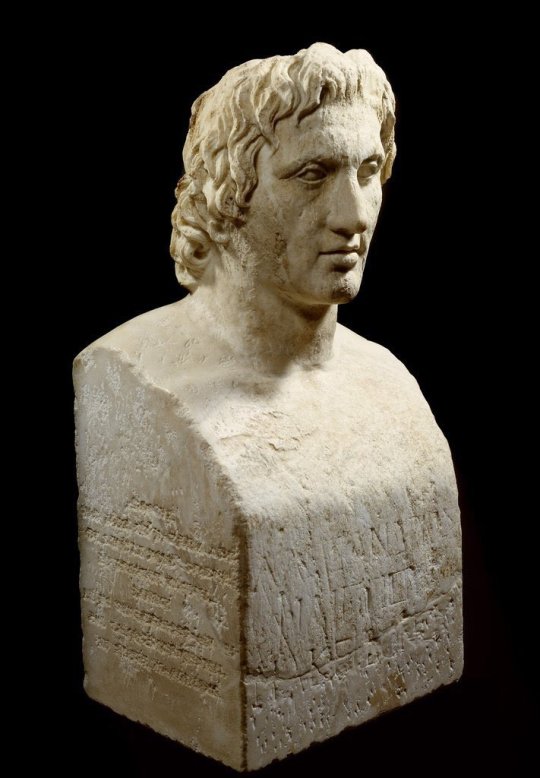
Copy (100-200 AD) of portrait carved by Alexander's personal portraitist Lysippus 330 BC (to say nothing of the zillions of other representations of him throughout Greek and Roman art)
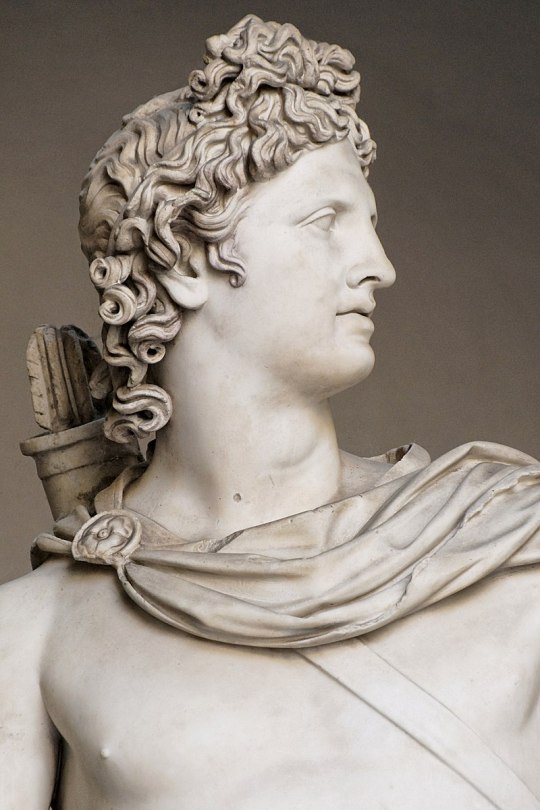
Roman, Greek-inspired or copied (120-40 AD) You know, one of the most famous pieces of classical art in the world??
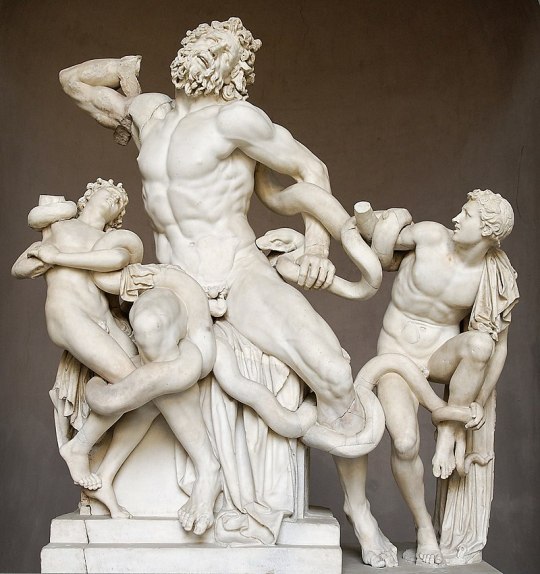
or you know, this unfamiliar and obscure little piece from 200 BC (Classical)

or the thousands of kores and kouros out there - 530 BC (Archaic)

or this guy, who clearly nobody's ever seen or heard of from 1550 BC (Bronze Age)
Like OP I'm sorry your uneducated ass can't think of a single piece of art from southern Europe pre-renaissance (wonder what those crazy italians were renaissance-ing back to, exactly???) but that is not a problem LITERALLY anyone else has
#worst history/mythology post series#the ancient world#ancient greece#greek mythology#ancient greek art#bronze age greece
18 notes
·
View notes
Text
No actually I’ll say this with my whole chest. I don’t give a shit that seanan mcguire is on tumblr, the wheel of time should win. It’s a fucking foundational work of high fantasy, it’s one of the most influential series in the genre of all time. It has THREE THOUSAND named characters!!!! With intricate and complex world building and history, it’s in large part a meditation on how ideas and stories change over time, how real events are made into folklore and misinterpreted and reinterpreted across years and generations. It’s about transforming tropes and conventions. It’s about what happens when the chosen one prophecied to save and destroy the world is a regular person who says ‘no fucking thank you’ and tries to escape destiny. It’s about a world where the original sin was committed by a man and how that changes the shape of society. It has some of the best female characters I’ve ever read in a high fantasy, especially one from the 90s.
It’s secretly a post apocalyptic sci fi dressed like a high fantasy!
Other incredibly rad stuff in wot:
-an invading empire of BDSM petplay cowboys
-an ancient magical institution with color coded factions that’s way more interesting than anything JKR ever used
-dimensional travel all over the place, pocket dimensions, fast travel, and some dimensionally bound trickster fae that grant wishes and provide cryptic answers (and might kill you)
-my personal favorite magic system based on weaving and threads of energy that extends into the larger worldbuilding, framing all of reality as a woven pattern, a tapestry of all lives woven together into a larger whole
-incredibly rich world building that draws influence from numerous cultures and mythologies and religious frameworks
-a wise mentor figure who is a tiny immortal magical horse girl
-a reluctant prophecied protagonist who is both jesus coded and an antichrist figure, and also kind of King Arthur (but there’s another guy who was also kind of king arthur, and a bunch of other characters ripped from arthuriana)
-the world of wot contains the origins for much of our folklore (hence the arthur thing) and the folklore in wot is often times derived from our world. There are references to early space travel and other of our world events in their mythology.
-this is possible because the concept of time in the wheel of time is just that. A wheel, non linear, a repeateding cycle of cataclysm and rebirth where memory becomes legend, legend fades to myth, and even myth is long forgotten when the age that gave it birth comes again.
-a badass nomadic warrior society from an inhospitable desert whose strongest faction are kickass ladies with spears
-the answer to what happened to the ent wives in lotr
-force lightning that wipes someone from the fabric of spacetime so hard that it also erases whatever actions they were doing immediately beforehand
-immortal evil academics who made a deal with the devil metaphor three thousand years ago, one of whom is the WORST therapist the world has ever known
-a plot shrouded in prophecy where no POV character ever has the full picture and the reading experience involves piecing shit together yourself to figure out what the hell is happening
-so many extremely loving descriptions of outfits. My god this man can spend three pages describing textiles in exquisite detail
-a very important horse who is debatably god
VOTE FOR THE WHEEL OF TIME
1K notes
·
View notes
Text
Origins of Sansa’s Name
I’ve seen a lot of tumblr posts over the years that attribute Sansa’s name to meaning “charm or praise” or a play on the French sans a Stark (“without a Stark”), and occassionally, I’ve seen her name compared to a thumb piano, but not one of these theories has ever sat right with me.
ASOIAF is based on history and draws from literature and mythology, after all. So why not look there for the origins of an usual name?
I’ll start with the obvious. The series is called A Song of Ice and Fire. Her sister is named Arya, pronounced like “are ya?” but suspiciously reminiscent of the musical term aria (air) for a solo in a larger work. Sansa, then, could be traced to poetic terms. Her name sounds like a softer version of the Italian stanza (literally: “room”), a structured set of lines akin to a prose paragraph or a song verse. If we think of a poem as a body of work in the way that an opera consists of airs and a series consists of books, then Sansa’s perspective is one piece of the narrative.
The purported original plan for Sansa was for her to marry Joffrey as expected, have a child, and bitterly regret her choices. So we could ask ourselves if Sansa shares a name with an actual person.
Well...yes.
In 1494, one Sancha of Aragon married Goffredo, the youngest son of Rodrigo Borgia and Vannozza dei Cattanei. Borgia, the powerful family infamous for accusations of murder, adultury, and incest that would shock a Lannister. In fact, Jaime and Cersei have been compared to siblings Cesare and Lucrezia, given his status as a skilled knight and her history of using poison when charm fails (as Lucrezia was rumored to do). It’s a nice enough comparison, but here’s the real kicker: Goffredo was also referred to by another name, Jofré.
But Sansa’s arc has changed from GRRM’s original idea, so what could the name mean for her story?
Let’s look at her character: courteous, eager to please, and wanting a world as romantic as oral tradition would have it. You could say she waxes quixotic about how life “was just like the songs” and how Joffrey was her dulcet prince...until bitter reality destroys her dreams for the future. Then she tries to resign herseslf to the worst (“in life, the monsters win”) and make practical decisions in order to survive. Her journey from romance to realism mirrors that of Cervantes’s titular Don Quixote. Any variation on Quijote would be too obvious, though, so why not refer to his sidekick Sancho?
Sancho is Quixote’s foil, the realist to his romantic, the peasant to his nobility, and eventually, the two begin to rub off on each other. By the end of the novel, Don Quixote is a depressed man, but Sancho has risen to adopt his optimistic and romantic dreams for them. Could this mean that Sansa will eventually return home with a song in her heart?
Yes. How could it end any other way?
#Sansamonth2022
#sansa stark#asoiaf#asoiaf meta#sansamonth2022#sansamonth#sansaappreciationfest2022#let's file this under Books day
76 notes
·
View notes
Text
Why Is CLAMP Like This, Part IV
12 Days of Aniblogging 2021, Day 10
Yet again I am here to review each CLAMP manga in chronological order. We've finally reached the 2010s, and yet again I am not impressed.
In case you missed it, yesterday's post can be found here. It may be relevant for my thoughts on the sequels to xxxHolic and Tsubasa.
Gate 7
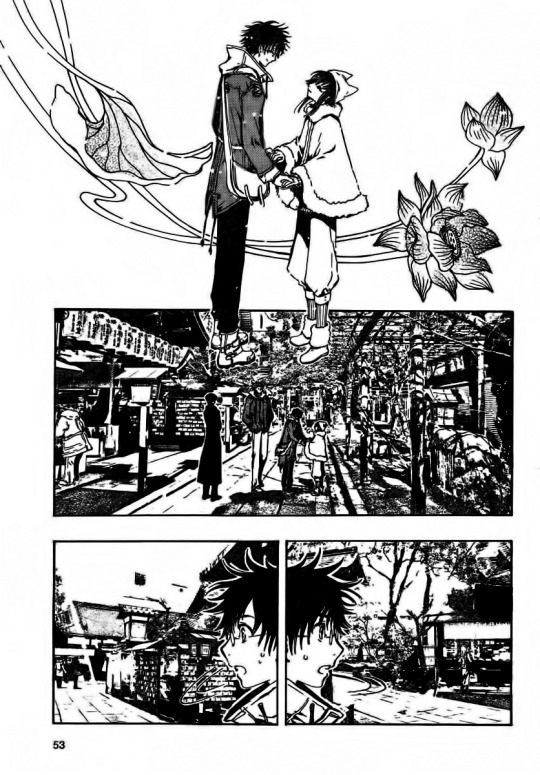
Gate 7 definitely puts its worst foot forwards. Our main character is, of all things, a Kyoto otaku, obsessed with the city’s history and everything in it. After a fate encounter with a Mysterious Yet Childish Girl Who Immediately Falls In Love With Him, he ends up joining the group house of some university students embroiled in a larger supernatural conflict. The manga routinely references Japanese history and mythology without much explanation, which can frequently leave readers confused if they aren’t already familiar. Bless the scanlators for trying their best to give context at the end of each chapter, though. Early chapters of the manga also feature jarring scanned photo backgrounds, which do not mesh at all with CLAMP’s artstyle.
But then things get better. The conflict is finally explained as “reincarnations of Japanese warlords settle feuds from the Warring States Period by duking it out with Stand-like oni”, which is way simpler then they make it out to be at first. The artwork is top-quality.. New characters are gradually introduced and their designs feel original and distinct, which is something CLAMP struggles with in many other series. Yukimura Sanada is really hot.
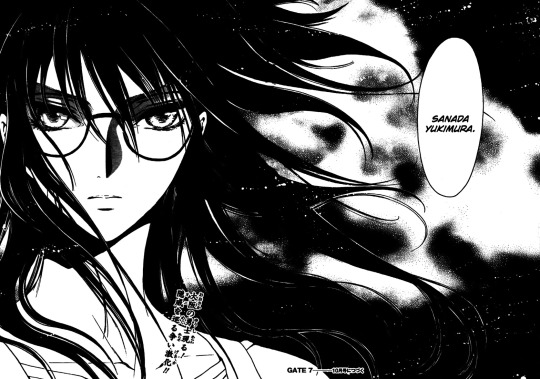
The sides of the conflict are established, the intrigue deepens, and what happens next? Four volumes in, CLAMP halts Gate 7 to make space for their sequels to xxxHolic and Tsubasa. Ugh.
CLAMP BULLSHIT-O-METER: 2/5
OVERALL RATING: 3/5
-
Drug & Drop

CLAMP straight-up drew their characters in fetishwear for the magazine cover and I can't not include that here
This is a continuation of CLAMP’s earlier manga Legal Drug, and Floating Catacombs veterans will remember that I quite liked Legal Drug. Granted, I was mostly in it for the crossdressing, and Drug & Drop drops that narrative thread. Instead, it chooses to start poking away at the central mysteries of its setting, which is a little less exciting but still welcome. We start to learn about the blond bishie’s tragic backstory, and the motivations of the two owners of the Green Drugstore are revealed.
As it turns out, this is another stealth sequel to Wish! It’s so strange to me that this largely unmemorable late 90’s CLAMP manga ends up being the keystone to two separate series over a decade later. The owners of the Green Drugstore turn out to be the angel x devil couple from Wish in disguise, and I’m still chewing over the idea of the angel girl passing herself off as a feminine gay guy. Somehow Clamp’s shounen-ai routinely has their most intriguing gender moments.

The childhood trauma is established, the intrigue deepens, and what happens next? Two volumes in, CLAMP halts Drug & Drop to make space for their sequels to xxxHolic and Tsubasa. Not again.
CLAMP BULLSHIT-O-METER: 3/5
OVERALL RATING: 3/5
-
xxxHolic: Rei
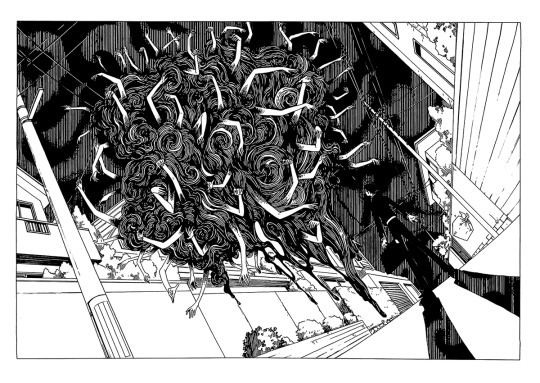
While it sucks that Gate 7 and Drug & Drop had to get axed for rehashes of CLAMP’s more popular series, at least I already liked xxxHolic. Rei serves as a spinoff and a sequel to the original series, although it’s intentionally difficult to figure out how it slots in chronologically at first. Yuuko running the shop like nothing ever happened, and their adventures have the lighthearted tone of the earlier parts of the series. Clients come to Yuuko’s shop, and she and Watanuki investigate curses. This whole thing is drenched in deliberate deja vu, which Watanuki himself gradually realizes. It turns out the powerful shop-owner Watanuki we see at the end of xxxHolic had at some point yeeted himself into an alternate timeline in order to acquire some magical items that Syaoran would need for an upcoming adventure. He chooses to wake up from this dream, and from there the manga continues where original xxxHolic left off.

It’s a neat narrative trick and fits the supernatural mystery vibes that xxxHolic goes for, while giving us more time with Yuuko, a deservedly beloved character. While it fails to reach the heights of the original series, Rei is still a pretty good time while it lasts.
Watanuki snaps back to reality, the intrigue deepens, and what happens next? Three volumes in, CLAMP halts xxxHolic: Rei to make space for their sequel to Cardcaptor Sakura. God dammit, we were so close to a conclusion too.
CLAMP BULLSHIT-O-METER: 2/5
OVERALL RATING: 3/5
-
Tsubasa: World Chronicle
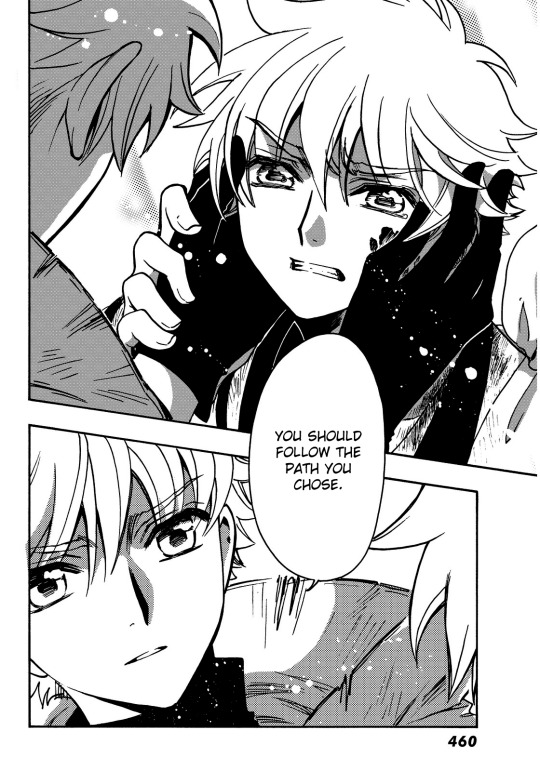
Another decade, another pair of Tsubasa and xxxHolic manga. Once again, Tsubasa is easily the weaker of the pair, although it does at least have the decency to limit itself to 3 volumes this time.
The villain’s scheme in the main series was to destroy the rules of reality itself in order to return his lover from the dead. World Chronicle further explores that idea of the boundaries between life and death, bringing Syaoran to a world where the usual cycle of reincarnation has been put on pause, leading to fears that the dead will vastly outnumber the living and eventually spill over, creating a hellworld. Syaoran, as someone who sort of died and came back in the finale of Tsubasa, is now uniquely capable of resolving this problem, because he’s already proven capable of crossing into limbo.
Running off of the tip that his clone was last seen here, Syaoran ventures off into the world of the dead with the help of those random magic items Watanuki spent a whole spinoff manga gathering. Once he reaches a sacred grove there, Syaoran has to choose whether to renew the cyclesof life and death or let it fade away to something different, which is pretty much the ending decision of any Dark Souls game.
Anyways, of course Syaoran chooses to reincarnate the dead, it’s just the nice thing to do. In order to prove his will, though, he has to fight to the death against the one who he least wants to fight, which is apparently his evil clone. So the two guys have to beat the shit out of each other at the end of the world. Once again, very soulsey.
With the manic pixie dream girl reappearing as a goddess in this world, Gate 7 is roped into Tsubasa’s endless shared universe. Considering that it was canceled to make room for more TsubasaHolic, this feels more insulting than anything.

After three volumes, Tsubasa World Chronicle manages to do the one thing no other 2010s CLAMP series could: reach a conclusion. I wish it had been literally any other one of them, but at least this decade wasn’t a total failure. World Chronicle is nothing special, but unlike its parent series, it’s at least possible to follow the story in the moment.
CLAMP BULLSHIT-O-METER: 3/5
OVERALL RATING: 2/5
-
Cardcaptor Sakura: Clear Card Arc
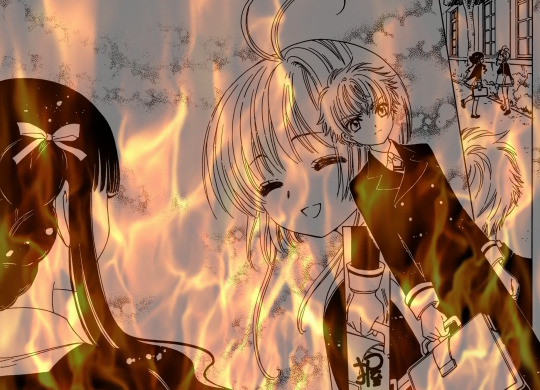
The harlot.
_
So that’s CLAMP’s last decade. Needless to say, it’s pretty muted compared to what came before it. Three consecutive series getting canceled for “safer” sequel projects just when they were getting somewhere. There’s an obvious level of disinterest in their own manga at this point, and that’s disappointing. You can fault 90’s and 2000’s CLAMP for a lot, but at the least they were always passionate about what they were putting out, even if it was incomprehensible to the rest of us. They’re getting older, and while I don’t think it’s wrong to put out increasingly formulaic works if that’s what pays the bills, it’s still sad to watch it happen in real time. Maybe I’ll have some kind words once Cardcaptor Sakura: Clear Card Arc finishes so we don’t end on such a somber note, but considering what I’ve read thus far, I’m fully prepared to rip into it.
And with that, thanks for reading through my CLAMP retrospective! I crunched the numbers and CLAMP now accounts for one-third of all manga tankobans I’ve read. I don’t know how to feel about this.
Bonus: The Legend of Chun Hyang
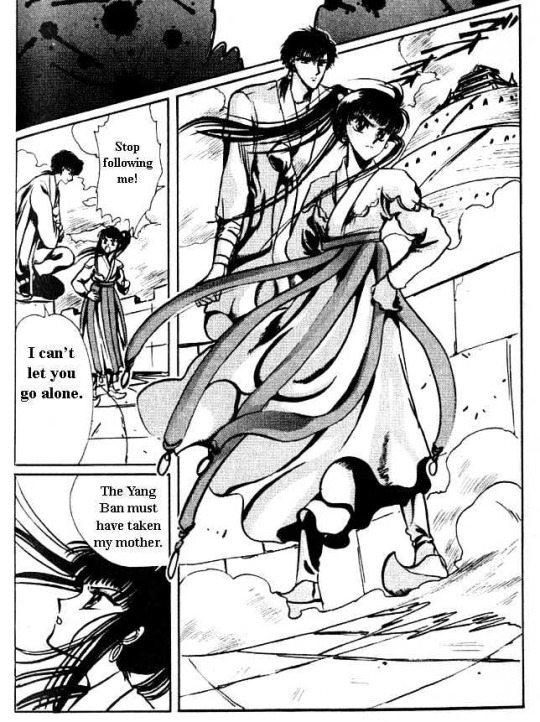
I missed this manga when going through CLAMP's 90s works last year. The Legend of Chun Hyang is a 1992 epic mythological manga in the style of their debut work RG Veda. It adapts a Korean folktale, taking creative liberties by casting the titular Chun Hyang as a fiery martial artist with a strong spirit of justice.
It actually makes sense to cover The Legend of Chun Hyang in this section because it's ultimately another one of CLAMP's stray casualties, abandoned after just one volume and hastily reworked into a one-shot. This doesn't work too well, considering that most of the volume is setting up for a larger adventure that never happens. After the tragic death of her mother at the hands of a warlord, Chun Hyang vows to stop tyranny wherever she finds it with the help of her mysterious new traveling partner. Except, of course, we only get a few chapters of them.
To be fair, this was caused by its magazine getting discontinued, but it's a shame CLAMP never picked this series up again. The closest we see is a world in Tsubasa which features the same general premise. Chun Hyang is fine for what it is, but it's hard not to feel let down afterwards.
CLAMP BULLSHIT-O-METER: 1/5
OVERALL RATING: 3/5
37 notes
·
View notes
Text
Monster of the Week: A Writer’s Guide to Vampires!

The Basics: Vampires From Around the World
Almost every culture has its vampires, and they go way beyond Dracula and Nosferatu.
There are obviously too many to include in one post, so here are a few especially unique vamps to get you inspired and interested in learning more!

The Penanggalan, Malaysia - Literally meaning ‘to detach,’ the Penanggalan is an exclusively (apparently) female creature.
By day, she masquerades as a normal woman (and let’s be real, don’t we all.) But by night, her head detaches from her body and floats around, entrails hanging like tentacles -- which they nightmarishly use to entangle their victims -- and preys on pregnant woman and babies. Lovely.
Creepily, the Penanggalan gravitates towards day jobs such as midwifery, so she can get closer to her prospective prey.
The Manananggal, Philippines - Much like the Penanggalan, the Manananggal has an unfortunate habit of detaching parts of her body to fly around. Described as an “ugly, hideous woman” (mood), the Manananggal can detatch her whole-ass torso to fly around like a bat.
Like the Penanggalan, she preys on pregnant woman and unborn babies, with, creepily, her incredibly long tongue. Some, however, prefer to seduce and prey on men -- preferable, to be honest -- in which case they appear young and beautiful.

The Upir, Eastern Europe - Ukrainian, Belarusian, Russian, Romanian, and Czech cultures all have mythos around this abnormally bloodthirsty vampire. Not only do upirs drink the blood of their victims, but they bath and sleep in it. They eat the flesh of their victims as well, and are especially partial to the heart. In a uniquely sadistic detail, the Upir is thought to consume the children of a family and then the parents.
The Alukah, Judaism - Literally meaning “horse-leach,” the Alukah is one of the earliest vampires, originating in the Bible.
A fixture of Jewish folklore, and sometimes described as a demon or witch, the Alukah is unique in the fact that she is not undead but a living, shapeshifting being (according to the description in Sefer Hasidim.)
She can fly by unfurling her long hair.
The Brahmaparusha, India - This nightmarishly extra vampire will drink the drained blood of its victims from a skull (which it carries around at all times), before noshing on their brains and wearing their intestines as necklaces and crowns. Worst of all, this vampire has an unusually ravenous appetite, and consumes several victims per night.
The Callicantzaros, Greece - In Greece, children born between Christmas and Twelfth Night were thought to be bad luck (?) and susceptible to vampirism. The Callicantzaros was considered to be egregiously unpleasant, equipped with devilish talons with which to tear victims to shreds. Their first victims, post-transformation, were supposed to be their own siblings.
Unfortunately, this led to a degree of mistreatment and hostility towards children born during this period, as parents watched for signs of their progeny’s prospective vampirism. In order to ensure that they didn’t become Callicantzaros, the children’s feet were dangled above a fire, like a reverse Achilles.

Vampire weaknesses:
Garlic - This one’s not just particular to Western mythos. Southeast and far Eastern vamps like the Manananggal are also vulnerable to garlic.
Salt - The Manananggal is vulnerable to salt, as are vampires from most cultures in which salt is considered holy or purifying.
Silver - A holy metal. The origin of the “vampires can’t see themselves in mirrors” myth is because it used to be a component in mirror-making.
Vinegar - Again with the Manananggal.
Daggers/stakes/sharp objects - Especially through the vampire’s heart. In many cultures, burning the heart is also advisable. Be careful, though: sometimes, staking an upir will only bring them back to life stronger.
Dismemberment and fire - Most vamps are susceptible to this, including the Penanggalan. The only sure way to kill an upir is to decapitate them and burn the remains.
Counting - Much like the Count of Sesame Street, vamps can’t resist counting things. If you scatter some small, countable objects on the ground, the vampire will have to stop and count each one.
The tails of stingrays - in the case of the Manananggal.
Sunlight - Obviously. Though not universal, this pops up in vampire mythology around the world, including the Manananggal.
Detachment - when the Penanggalan and Manananggal detach their heads and torsos, their discarded torsos and lower bodies are vulnerable. In the case of the Manananggal, sprinkling the discarded legs with garlic and salt. The Mananggal will not be able to return to its lower body, and will perish with the rising sun.
Starvation - The Alukah can be starved if she’s prevented from eating for long enough.
Stupidity - In the case of the Penanggalan. If you turn the Penanggalan’s body upside down, she’ll re-attach backwards. I’m not sure what the purpose of this is, except the exhilaration of punking a vampire and making them walk around on their hands all day like a jackass.
Protection:
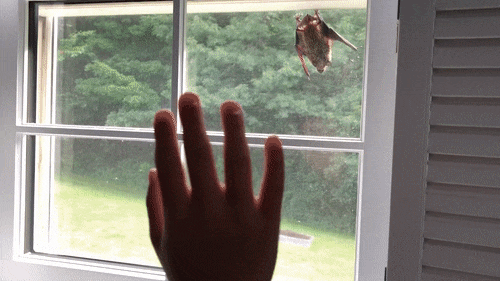
Thorns around windows - Thorns will keep the Penanggalan from harassing you or your unborn children.
Strings of garlic - Just make sure SOME IDIOT doesn’t take them down (RIP Lucy from Dracula.)
Pots of uncooked rice, ash, or salt - Repellent to the Manananggal.
Running away and hiding - Basically the only method of recourse against the Brahmaparasha.
Eating bread infused with an upir’s blood - Sounds kinky, to be honest.
Stay on sacred ground - I.e. graveyards and churches. Just be sure you’re not trying to avoid the kind of vampire that dwells in graveyards if you go for the latter.
Holy water, crucifixes, silver, et cetera - Anything sacred or holy. Varies based on culture.
Imbibing the ash of a supposed vampire’s burnt heart - I’m not even going to joke about this one, since people actually did this during the vampire scare of New England (my homeland.) I learned about it from a book about local vampire encounters at the Newport Public Library at age twelve, and it scarred me.
Dangle your baby above a fire - Actually, no, PLEASE don’t do that. But that’s what seventeenth century Greeks did to prevent their kids from turning into Callicantzaros.
Age of consent laws - Specifically for Edward from Twilight.
Don’t get a welcoming mat - Counts as inviting them in. Duh.
Ways to Become A Vampire:*
*Ask your doctor if becoming a vampire is right for you.
Biting - Obviously. Though if you read Dracula and early accounts of vampirism, it was more of a slowly progressing illness than a sudden transformation.
Reject Christianity - In the case of upirs. More specifically, the church buried non-believers outside of graveyards, leading them to rise as servants of the Devil. Honestly, I feel like the church kind of brought that on themselves.
Be born between Christmas and Twelfth Night - At least if you’re in seventeenth century Greece.
Be influenced by the Devil while dying - Another version of the Upir origin.
Be a demon possessing a corpse - One prospective explanation for the Brahmaparusha.
Making a pact to obtain eternal youth and beauty that involves not eating meat for 40 days and then breaking it like some kind of an IDIOT - One version of the Penanggalan origin myth. I shouldn’t judge, my self-control isn’t great either.
Get startled by a man while meditating in a bath and jerk your head so hard that it flies off and at the interloper in fury - Another prospective version of the Pennangalan origin. Relatable, honestly.
Be so bitter and jealous of couples that you go on an insane killing spree of pregnant woman and get publicly executed by being ripped in two - The Pennangalan, again. She makes the Kardashians look tame.
Chanting an incantation, anointing yourself with oil, and purchasing a black chick - In the case of the Manananggal. The black chick reportedly lives inside the Manananggal, eating its innards while also acting as its life source. Honestly, after all the drama of the Penanggalan’s origins, this seems reasonable.

Other Sources
Video Essays:
The Power of the Vampire Myth - A superb sociological dive into the cultural significance of vampires. From the post WWI antisemitism of Nosferatu to their ability to subvert the Hays Code, vampires tend to reflect the shadows of every society.
Dracula: A Brief History of Eternity
CREEPIEST Vampire Legends from Around the World
Vampires: Folklore, Fantasy, and Fact
How did Dracula become the world’s most famous vampire?
Vlad the Impaler: The Real Life Dracula
Influential Vampire Fiction:*
*That I’ve read/seen so far.

Dracula - Duh. The greatest adaptation of which is, obviously, Dracula: Dead and Loving it.
Nosferatu - It’s good to be aware of its antisemetic overtones, but it’s still revolutionary at evoking dread.
Varney the Vampire - A penny dreadful series that helped popularize vampires in Victorian England. It gets bonus points for sounding like a children’s show.
Camilla - The ORIGINAL lesbian vampire, predating Dracula by decades. Became an adorable webseries and movie, which I recommend even more than the original novel.
‘Salem’s Lot - Serves as a study of what makes vampires scary in the modern era.
Underworld - Aside from serving as a badass alternative in the Twilight era, it merits inclusion exclusively for causing my Sapphic awakening at age twelve.
What We Do In the Shadows - Has a unique understanding of the cultural significance of vampires, and why they appeal to societal misfits. Also has vampire “children” who eat p*dophiles.
Vampires in the Lemon Grove - The titular story is one of the most unique interpretations of vampires that I’ve seen in the modern era. Beautiful language that evokes a powerful emotional response.
Twilight - Exclusively because it gave us Rosemary clocking shop in a wedding gown. And the baseball scene.
Nonfiction:
The Encyclopedia of Vampires, Werewolves, and Other Monsters
From Demons to Dracula: The Creation of the Modern Vampire Myth
Vampires and Vampirism: Legends from Around the World
New Orleans Vampires: History and Legend
Mummies, Cannibals, and Vampires: The History of Corpse Medicine
A History of Vampires in New England
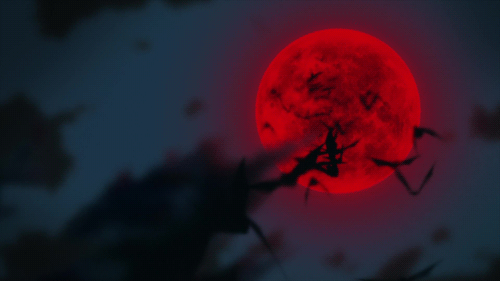
Happy Halloween, and happy writing, everybody!
#creature feature#halloween#halloween 2020#vampires#mythology#writing resources#writing advice#legends#folklore#gifs for ts
561 notes
·
View notes